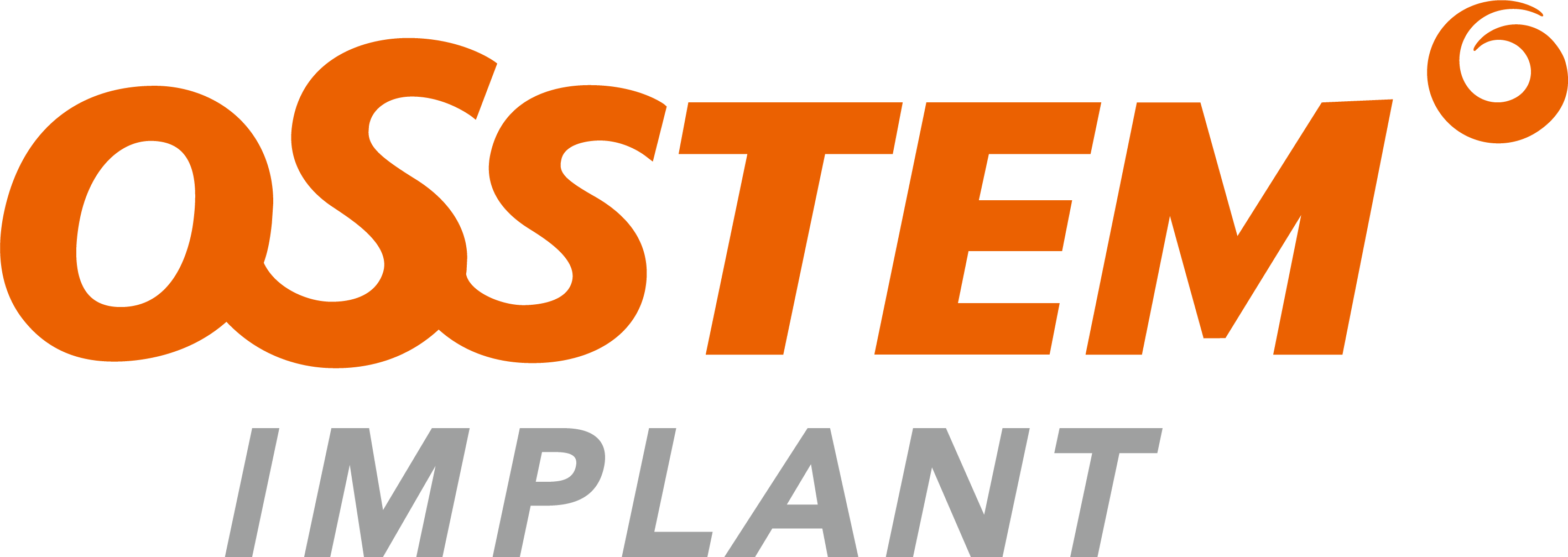SEOUL, South Korea: For decades, researchers have sought to enhance the reliability and speed of implant osseointegration through innovations in design and surface characteristics. In this same pursuit, Osstem Implant developed its next-generation SOI (Super Osseointegration) surface treatment. This treatment, applied to the sandblasted and acid-etched implant surface, accelerates healing, enhances initial ossification and shortens the time to loading.
The TSIII SOI implant is a groundbreaking advancement in the field of dental implantology, boasting unprecedented blood coagulation capability and excellent osseointegration characteristics. These recent achievements in biocompatibility improve the entire patient experience and support aesthetic and functional restoration.
Nearly a decade ago, Osstem’s researchers developed the pioneering SOI technology for a surface treatment that significantly improves osseointegration. The SOI treatment prevents the formation of biofilm and rapidly forms ample blood clots on the implant surface to activate a fibrin network, resulting in higher bone attachment compared with other implant surface treatments.
These advanced features are achieved by utilising UV and the HEPES buffering agent in treating the surface of TSIII SOI implants during production. UV treatment modifies the physiochemical characteristics of titanium, improving the implants’ biological activity by removing deposited hydrocarbons and restoring surface hydrophilicity. The HEPES coating also preserves this hydrophilicity by preventing the formation of hydrocarbons, and it establishes a neutral physiological pH level that inhibits osteoclasts and supports osteoblasts. Together, the UV and HEPES treatments produce a super-hydrophilic implant coating which accelerates the osseointegration and healing process.
Since the SOI surface launch in 2021, it has been widely adopted by dentists in Europe. It shortens the implant osseointegration period from a maximum of six months down to two months.



 Austria / Österreich
Austria / Österreich
 Bosnia and Herzegovina / Босна и Херцеговина
Bosnia and Herzegovina / Босна и Херцеговина
 Bulgaria / България
Bulgaria / България
 Croatia / Hrvatska
Croatia / Hrvatska
 Czech Republic & Slovakia / Česká republika & Slovensko
Czech Republic & Slovakia / Česká republika & Slovensko
 France / France
France / France
 Germany / Deutschland
Germany / Deutschland
 Greece / ΕΛΛΑΔΑ
Greece / ΕΛΛΑΔΑ
 Italy / Italia
Italy / Italia
 Netherlands / Nederland
Netherlands / Nederland
 Nordic / Nordic
Nordic / Nordic
 Poland / Polska
Poland / Polska
 Portugal / Portugal
Portugal / Portugal
 Romania & Moldova / România & Moldova
Romania & Moldova / România & Moldova
 Slovenia / Slovenija
Slovenia / Slovenija
 Serbia & Montenegro / Србија и Црна Гора
Serbia & Montenegro / Србија и Црна Гора
 Spain / España
Spain / España
 Switzerland / Schweiz
Switzerland / Schweiz
 Turkey / Türkiye
Turkey / Türkiye
 UK & Ireland / UK & Ireland
UK & Ireland / UK & Ireland
 Brazil / Brasil
Brazil / Brasil
 Canada / Canada
Canada / Canada
 Latin America / Latinoamérica
Latin America / Latinoamérica
 USA / USA
USA / USA
 China / 中国
China / 中国
 India / भारत गणराज्य
India / भारत गणराज्य
 Japan / 日本
Japan / 日本
 Pakistan / Pākistān
Pakistan / Pākistān
 Vietnam / Việt Nam
Vietnam / Việt Nam
 ASEAN / ASEAN
ASEAN / ASEAN
 Israel / מְדִינַת יִשְׂרָאֵל
Israel / מְדִינַת יִשְׂרָאֵל
 Algeria, Morocco & Tunisia / الجزائر والمغرب وتونس
Algeria, Morocco & Tunisia / الجزائر والمغرب وتونس
 Middle East / Middle East
Middle East / Middle East
:sharpen(level=0):output(format=jpeg)/up/dt/2024/04/Shutterstock_1017664873.jpg)
:sharpen(level=0):output(format=jpeg)/up/dt/2024/04/Treating-periodontal-disease-reduces-atrial-fibrillation-recurrence.jpg)
:sharpen(level=0):output(format=jpeg)/up/dt/2024/04/3Shape-charts-sustainable-course-with-release-of-comprehensive-sustainability-report-2023.jpg)
:sharpen(level=0):output(format=jpeg)/up/dt/2024/04/Zumax-Medical-Image-1.jpg)
:sharpen(level=0):output(format=jpeg)/up/dt/2024/04/IDEM-2024-Wraps-up-its-13th-edition-with-record-breaking-success.jpg)








:sharpen(level=0):output(format=png)/up/dt/2023/11/Patent%E2%84%A2-Implants-_-Zircon-Medical.png)
:sharpen(level=0):output(format=png)/up/dt/2011/07/fdi.png)
:sharpen(level=0):output(format=png)/up/dt/2015/09/Curaden.png)
:sharpen(level=0):output(format=png)/up/dt/2022/01/HASSBIO_Logo_horizontal.png)
:sharpen(level=0):output(format=png)/up/dt/2014/02/Du%CC%88rr_Dental.png)
:sharpen(level=0):output(format=png)/up/dt/2022/10/DMP-logo-2020_end.png)
:sharpen(level=0):output(format=png)/up/dt/2022/05/osstem_logo.png)
:sharpen(level=0):output(format=jpeg)/up/dt/2024/03/Osseointegration-of-the-future-with-Osstems-TSIII-SOI-implant.jpg)
:sharpen(level=0):output(format=gif)/wp-content/themes/dt/images/company-photo.gif)
:sharpen(level=0):output(format=jpeg)/up/dt/2024/03/Osseointegration-of-the-future-with-Osstems-TSIII-SOI-implant_1.jpg)
:sharpen(level=0):output(format=jpeg)/up/dt/2024/03/Osseointegration-of-the-future-with-Osstems-TSIII-SOI-implant_2.jpg)
:sharpen(level=0):output(format=jpeg)/up/dt/2024/03/Magic-of-leading-digital-dentistry-2024-Osstem-World-Meeting-in-Seoul.jpg)
:sharpen(level=0):output(format=jpeg)/up/dt/2024/02/Osstem-highlights-education-in-2024-with-new-focus-and-expanded-educational-offering.jpg)
:sharpen(level=0):output(format=jpeg)/up/dt/2024/02/AEEDC-2024_OSSTEM-IMPLANT-4.jpg)
:sharpen(level=0):output(format=jpeg)/up/dt/2024/01/Avigator-Fortuner_Shutterstock_1991070551.jpg)


:sharpen(level=0):output(format=jpeg)/up/dt/2024/04/Osstem-Implant-lends-a-hand.jpg)
:sharpen(level=0):output(format=jpeg)/up/dt/2023/09/EAO-diamond-sponsor-Osstem-Implant_Matthias-Kaupe.jpg)
:sharpen(level=0):output(format=jpeg)/up/dt/2023/08/Osstem-Implant-Performs-Social-Contribution-Activities-Abroad1.jpg)
:sharpen(level=0):output(format=jpeg)/wp-content/themes/dt/images/3dprinting-banner.jpg)
:sharpen(level=0):output(format=jpeg)/wp-content/themes/dt/images/aligners-banner.jpg)
:sharpen(level=0):output(format=jpeg)/wp-content/themes/dt/images/covid-banner.jpg)
:sharpen(level=0):output(format=jpeg)/wp-content/themes/dt/images/roots-banner-2024.jpg)
To post a reply please login or register